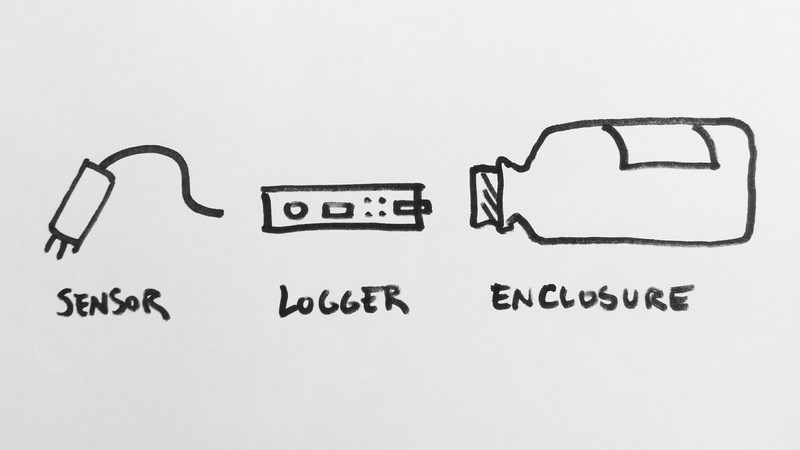
Water Sensors
Many people interested in measuring various water quality parameters that are relevant to environmental health in low-cost and accessible ways. Many have been working on low-cost, open-source sensors for water chemistry and physical properties, and there are also several commercially available water sensors and analog tools that can measure relevant water quality parameters.
Overview
Often, electronic environmental sensors are just one part of a system that includes:
- a data logger
- some kind of water and weather-proof enclosure
- a sensor of some kind -- see Sensors, below
And we also have to consider:
- how to download data
- how to visualize data
- how to design experiments using these techniques
Questions
Sensors
Often the first step is to look for a sensor for what you're hoping to measure. Below we're collecting info on different kinds of water quality sensors, and their:
- cost
- sensitivity/accuracy
- links and documentation
See and edit the full spreadsheet here
(See this list of sensors from the KnowFlow as well!)
Are there others you're interested in? Please add them to the list here and to the linked Google Doc! (below are some not listed above yet)
- flow rate
- temperature
- transparency
- chemical oxygen demand - COD
- phosphate
- total dissolved solids - TDS
- Hardness
- Lead
- bacteria
- fluoride
[prompt:text:ie temperature]
In-depth
Also see these pages for more resources on these topics:
Analog methods
Even though this wiki page is labeled "water sensors," the most accessible modes of measuring water quality parameters are often analog, non-digital methods where you directly observe water (e.g. using a secchi disk to assess turbidity) or collect a sample and test it with a visual method (e.g. color-change pH strips). Several analog tools are included in the spreadsheet, and please add more!
Hybrid approaches and enclosures
In some cases, it may be possible to couple a commercially available probe sensor with a DIY data logger (such as the Riffle, https://publiclab.org/riffle) and an water-tight enclosure to create a lower-cost deployable sensor. Deployable sensors can be extremely useful for long-term monitoring, monitoring in places that are difficult to access frequently, or to document fluctuations in water chemistry with greater temporal resolution.